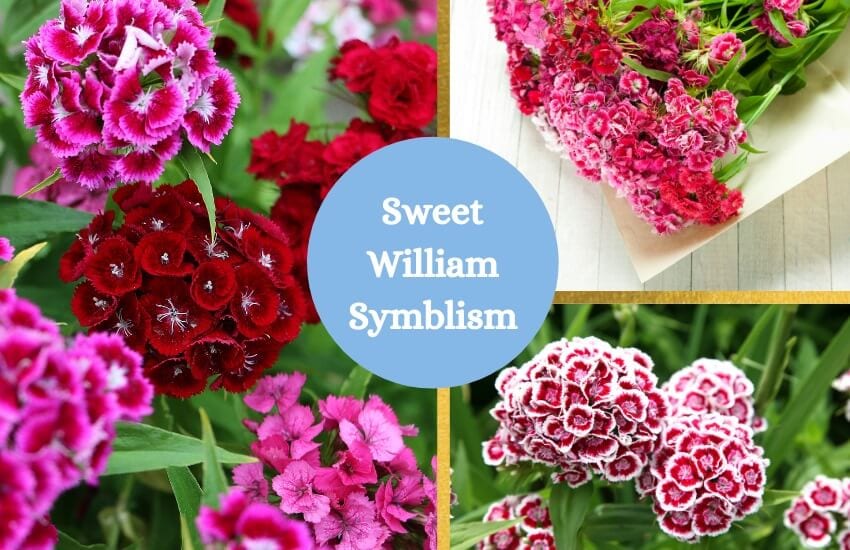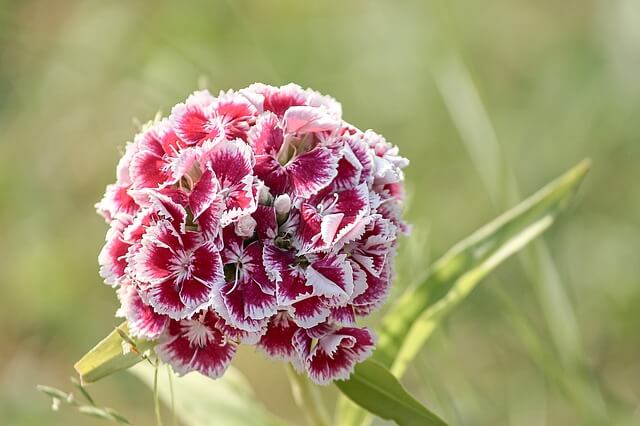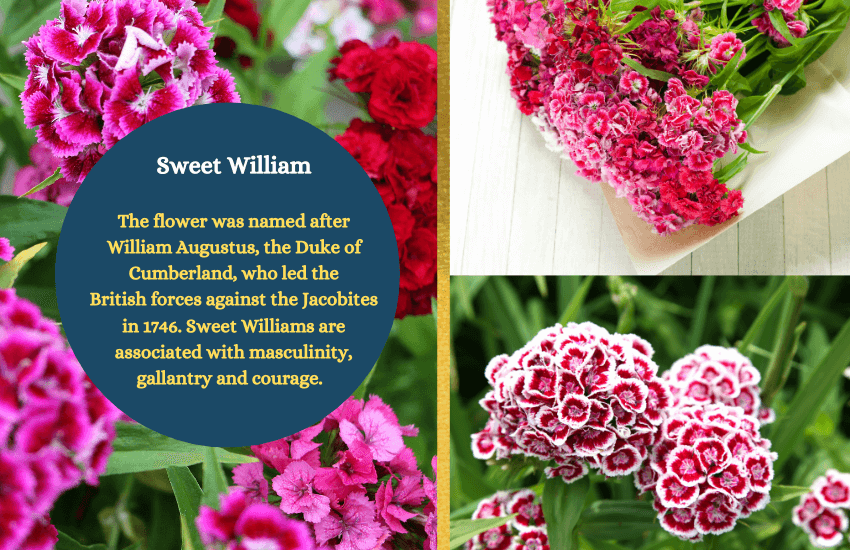
Table of Contents
A distinct flower because of its fringed petals, the Sweet William is considered the flower of the gods. The beautiful flower comes in different colors and patterns and is one of the very few blossoms that are associated with masculinity.
About the Sweet William
The Sweet William, or Dianthus Barbatus, belongs to the Dianthus species which is native to the mountains of Southern Europe. There are also varieties found in Korea, China, and Eastern Russia. Over time, it has become a popular ornamental garden plant.
Cultivated for over a thousand years, the tender perennials were commonly grown in households in England for hundreds of years. The double variety, which is quite rare, exists as far back as the 16th century.
The flower was originally highly regarded because of its clove-like fragrance, but most modern varieties do not have this fragrance anymore.
Sweet William Name and Meanings

The Sweet William is also known by several after names: China Carnation, Bearded Pink, and Sweet William Pink. The flower was named after William Augustus, the Duke of Cumberland. He led the British forces at the Battle of Culloden against the Jacobites in 1746.
However, other sources say that the flower got its name from the writings of 16th-century English poet Thomas Tusser.
Dianthus, the flower’s genus, comes from the Greek words “dios” which means divine, and “anthos” which means flowers. When put together, the words mean “flowers of God.”
Meanings and Symbolism of Sweet William Flower
Just as with other blooms, the Sweet William comes with a lot of symbolism and meanings.
- The Sweet William is one of the very few flowers that are associated with masculinity. This could be because of its connection to war, battle, bravery and courage.
- In Victorian times, the Sweet William signified gallantry.
- When presented to someone, it represents perfection and finesse and is a way of telling the recipient that the giver feels that they are smooth or as good as it gets.

Uses of Sweet William
A popular ornamental plant that is often found in flower beds and pots, the Sweet William also has other uses.
Medicine
Disclaimer
Sweet William is a key herb in Chinese medicine and is primarily used to treat urinary difficulties. In Western herbal medicine, the whole plant is used as a bitter tonic that helps stimulate the digestive and urinary systems. The flower is also classified as a diuretic, haemostatic, antibacterial, antiphlogistic, and anthelmintic.
Gastronomy
The Sweet William is edible and often used in cooking. Because of its mild flavor, it’s often used as a garnish for fruit and vegetable salads, as well as sorbets, desserts, cakes, teas, and cold drinks.
Beauty
As an essential oil, the Sweet William is largely used in perfumery and also has several therapeutic benefits to offer. It has anti-inflammatory effects that act as a muscle relaxant and also help prevent hair loss. Flower heads can be easily dried and used in potpourri and other cosmetic applications.
Sweet William Cultural Significance
A popular flower that has not escaped the attention of artists, the Sweet William has been featured in works of literature and art. The English poet John Gray wrote, “Sweet William’s Farewell to Black-ey’d Susan: A Ballad.”
King Henry VIII ordered that the flower be planted at his castle in Campton Court. Since then, the flower has been cultivated and grown in various English gardens for hundreds of years.
Sweet William was included in Kate Middleton’s bridal bouquet during her wedding to Prince William as a tribute to him.
To Wrap It Up
A lovely flower that makes a great addition to any bouquet or table centerpiece, the Sweet William also comes in bicolored varieties such as purple and white or white and red. Its charming good looks and history lends the flower symbolism and adds a touch of mystery.








